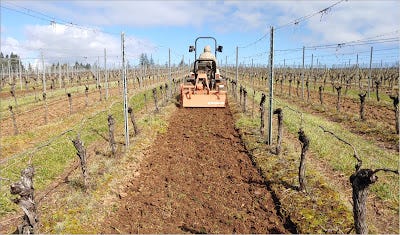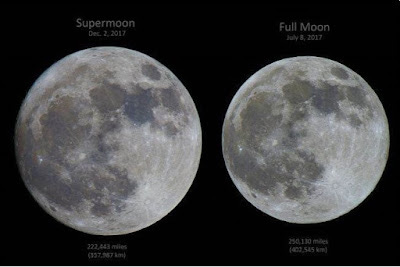Amalie Robert Estate Vintage Update: Breaking Bud 2020
Hello and Welcome, This is an Amalie Robert Estate Vintage Update: Breaking Bud 2020. A FLOG communication from Dena and Ernie @AmalieRobertEstate.

The Vintage 2020 has officially begun @AmalieRobert Estate with Bud Break on April 13th. The vines may look dormant, but that’s just a disguise. They have been waiting oh so patiently for Mother Nature to give them the “go signal” that it is time to start growing. That signal is usually passed on by the cherry trees as they begin to bloom.

But the vines lead two lives. What the vines will bear, and we will bear witness to during the Great Cluster Pluck, seems so far removed from what is occurring in the subterranean space. And that has been Ernie’s focus leading up to Bud Break.

The vine roots have been active during the winter months taking up all of the nutrients available in preparation for this momentous occasion. And new roots will be growing out to help replenish the root system that may have been compromised by tractor blight or more likely a random pocket gopher trying to gnaw off the roots. The vines don’t have much in the way of defense against these fur bearing varmints, so they just take it. New growth in the spring is their countermeasure.
Ernie has been quite the busy farmer leading up to Bud Break. His job is to get about 35 acres worth of vineyard floor ready for the growing season. Here is what you get when you turn Ernie loose in the vineyard with three Italians and 100 gallons of biodiesel to burn. He farms it, and he farms it hard.

Nutrient Recycling: Not everybody does it, but everybody should.
The first thing to do is mulch in last year’s woody canes with the green growing grass in the tractor rows. The first pass chops them down to size, and then Ernie sets the mower to “Pulverize” for the second pass. The second pass mixes the shredded canes with the fresh green grass and deposits the sublime mixture onto the vineyard floor. This just happens to be where the earthworms, microbes and other assorted soil digesters live. They take in this mix and compost it into new soil, releasing all manner of nutrients to the vines. All natural and no chemical fertilizers. As a farmer, you gotta love this part.
Those two passes take care of half the vineyard. The other half of the vineyard is where the rest of the nutrient cycling will occur. These “open” rows are where last fall’s cover crop of barley and nitrogen fixing winter peas were planted. Now it is time to cycle those nutrients for the vines and here is how Ernie does that. The first pass is in the open air with the crawler and the nearly indestructible (never say never) chisel plow. This handy implement goes down about a foot or so and cuts of any shallow roots – a little subterranean root pruning. This is handy for a dry farmer, as we want deep, penetrating roots that will tap into water late in the growing season. We don’t need no shallow roots @AmalieRobert.

Click to watch Ernie and the Nearly Indestructible Chisel Plow
Next up is the Rotovator. This implement turns-in the green growing plants with soil and oxygen. Just what the soil microbes need. And since we still have showers in March, the crawler is the ideal machine to tread lightly on our soil and not flatten the air channels and compact the soil. Vine roots don’t do well in compacted soils. Of course, springtime means paying the extortion fee to the winter battery gnomes who somehow manage each and every year to corrode the battery terminals. Hey, nice seed bed!

Click to watch Ernie and the Rotovator
And now for the pièce de résistance. Ernie self-quarantines in about a 30 cubic foot glass enclosure in yet a third Italian tractor. And that third tractor is mated up with a Schmeiser seed drill. The Schmeiser will take about 600 pounds of buckwheat and nitrogen fixing vetch seeds and deposit them at about an inch or so apart, in 7 furrows that total up to about 20 miles long. This is some very precise detail work, and you just can’t find that kind of help these days.

Click to watch Erie and the Schmeiser Seed Drill
We then patiently wait for rain, (which doesn’t take too much patience in the Pacific Northwest) and then these little seeds will germinate and grow all summer long. Their above ground usefulness comes to an end right after harvest and that is when Ernie turns them into the soil and plants his winter cover crop right over the top of them. The vine roots will absorb these nutrients over the winter with the help of their codependent mycorrhizae and, before you know it, they will be ready to break bud in vintage 2021.
And that, along with the Super Pink Moon that appeared on April 7th, is springtime in wine country. You probably think Ernie just made that up to match his last name, but that is not the case. The first full moon of April is called a Pink Moon due to the pink blooms on a wild flower that comes out in April. And it is a Super Pink Moon due to the close proximity to Earth.
https://www.space.com/super-pink-moon-biggest-full-moon-2020-amateur-photos.html

To make these Pink Moons, just look at them through your Pinot in Pink filled Rosé glasses. And if you find yourself in need of a little moon watching wine, you can check out Amalie Robert Direct.
Hard to believe, but we will be ready to cluster pluck in about 6 months. The big question is will we have a crew?
Kindest Regards,
Dena & Ernie



